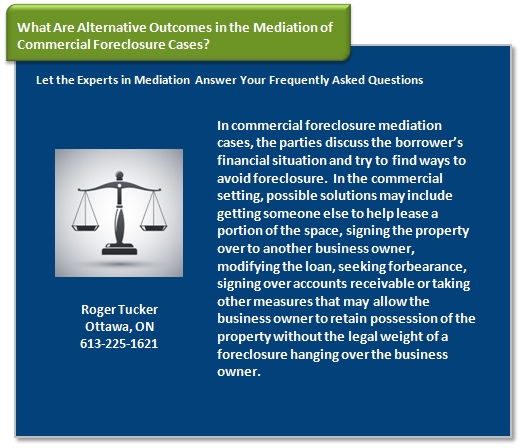
Mediating Contentious Alimony Cases
 Spousal support cases are some of the most bitter cases where the parties have often dug in their heels to completely opposite positions. Spouses on both side of the issue may feel strong emotions such as mistrust, anger, abandonment, outrage and exploitation.
Spousal support cases are some of the most bitter cases where the parties have often dug in their heels to completely opposite positions. Spouses on both side of the issue may feel strong emotions such as mistrust, anger, abandonment, outrage and exploitation.
Effectively mediating such cases takes a great deal of patience and sensitivity as the mediator navigates the narrow path to finding a solution that both parties will be satisfied with without feeling taken advantage of.
In most states, there are no hard and fast rules as to the amount or duration of alimony payments. Many courts treat the issue of alimony as a discretionary one in which they decide what is fair under the particular circumstances after weighing a number of factors, including the length of the marriage, the contributions of the spouses during the marriage and the earning capacity of the spouses. The courts are often tasked with the difficulty of determining how to keep both spouses in the approximate standard of living that they enjoyed during the marriage after they are no longer together. A skilled mediator can explain that many spouses have financial interdependence during a marriage and that it will take some time to unravel this so that the spouses can eventually both secure financial independence. The key question is how spousal support can eventually lead to this possibility.
Because there are typically no hard and fast rules regarding the order of spousal support, the mediator can use this ambiguity to assist with mediation. He or she can explain to each party independently what the court might order in the worst case scenario and potentially cite to a specific case where that is exactly what happened. Fueled with this information, the parties may be more inclined to settle their spousal support case on their own terms rather than leaving the decision to be made in an unpredictable fashion.
February 20, 2017
American Debt Set to Pass Financial Crisis High. 3 Reasons Not to Panic, Yet – Americans are nearly as much in debt as they were at the peak of the trouble back in 2008. At face value, that fact sounds pretty alarming. Dangerous, even.
Are You A First Time Home Buyer? Be Aware Of These Mortgage Programs – If you are shopping for a mortgage, you have probably seen all sorts of offers and advertisements aimed at first-time home buyers and wondered if these are really as good as they sound. In some cases, “first-time” programs are little more than attention getting marketing messages from lenders, while in others they are actual assistance programs for people who may otherwise face challenges with qualifying for a home mortgage or finding a home loan at an affordable interest rate. With this in mind, it is important to understand the difference between mortgage lender marketing programs, actual loan programs, and financial assistance programs.
Bitcoin Hash Functions Explained – Anyone with an interest in bitcoin will have heard the phrase ‘cryptographic hash function’ at some time or other. But what exactly does it mean, and how is it connected to cryptocurrency?
February 16, 2017
How Studying Data Helped Me Get Over My Divorce – When your marriage breaks apart, a long train of loved ones assure you that time will heal your grief. They are not wrong. But as a data journalist, I misunderstood them to mean the arc of that recovery would be linear.
Steep Decline: 21,000 Completed U.S. Home Foreclosures in December – According to CoreLogic’s December 2016 National Foreclosure Report, U.S. foreclosure inventory declined by 30 percent and completed foreclosures declined by 40 percent compared with December 2015. The number of completed foreclosures nationwide decreased year over year from 36,000 in December 2015 to 21,000 in December 2016, representing a decrease of 82 percent from the peak of 118,336 in September 2010.
6 ways to pay off your mortgage faster – Stop focusing on the rate and pay attention to prepayment options
Roger Tucker

About Mediation in Commercial Foreclosure Cases
 Commercial foreclosures have the power to destroy a struggling business by reclaiming the property where the business is conducted. Mediation can be employed in these situations to help the parties avoid the foreclosure process, which is often expensive, time-consuming and cumbersome. Mediation can help the parties come together with the help of a third-party neutral to develop possible solutions.
Commercial foreclosures have the power to destroy a struggling business by reclaiming the property where the business is conducted. Mediation can be employed in these situations to help the parties avoid the foreclosure process, which is often expensive, time-consuming and cumbersome. Mediation can help the parties come together with the help of a third-party neutral to develop possible solutions.
Either party can request mediation. The mediation can occur any time before the property has been foreclosed upon. When the borrower and the lender go to mediation, they should come prepared with the relevant documents, including the mortgage documents, notice of sale, notices, warning letters, communications between the parties and any other documents that may be helpful in the case.
At mediation, both parties may be represented or unrepresented, depending on the rules of the particular mediation program they use and personal preference. The lender should send someone to mediation who has the authority to modify the loan or otherwise negotiate an acceptable agreement. The parties must mediate in good faith and not simply use the process as a way to halt the foreclosure process.
At the end of mediation, the parties either reach an agreement regarding an alternative to foreclosure such as a loan modification or the foreclosure continues. While participating in mediation does not guarantee that foreclosure will be avoided at all costs, it does present an opportunity to potentially avoid this outcome, so there is little downside to fully participating in the process. Often, parties learn about options that they had not been aware of or had not considered prior to mediation, such as subleasing the property or seeking a temporary forbearance if revenue is expected to pick up. Mediation allows the parties to consider creative solutions that can help them regain financial footing.
Understanding the Commercial Foreclosure Process
 The commercial foreclosure process is very similar to a residential foreclosure. If the commercial borrower defaults on the loan, the lender may take steps to reclaim the property. Default is often triggered by non-payment, but it could also be due to some violation of the mortgage agreement such as failing to maintain insurance on the property or subleasing the property against the instructions on the mortgage documents. A foreclosure in the commercial setting may be conducted through the judicial or nonjudicial process.
The commercial foreclosure process is very similar to a residential foreclosure. If the commercial borrower defaults on the loan, the lender may take steps to reclaim the property. Default is often triggered by non-payment, but it could also be due to some violation of the mortgage agreement such as failing to maintain insurance on the property or subleasing the property against the instructions on the mortgage documents. A foreclosure in the commercial setting may be conducted through the judicial or nonjudicial process.
The nonjudicial process is sometimes used when the mortgage documents contain a provision permitting this act. A power of sale provision allows a trustee to sell the property without being supervised by the court. The borrower is entitled to notice of the sale and may have a certain amount of time to cure the default. In contrast, a judicial commercial foreclosure is handled through the court system and is initiated with a lawsuit against the borrower asking for the court to provide a foreclosure and order to sell the property. Each defendant is served with a copy of the complaint and must provide an answer to avoid a default judgment. If the borrower does not prevail in the action, the lender secures a judgment and order of sale and provides notice to the borrower of when the property will be sold.
The foreclosure process is often a long and expensive one, often resulting in net losses for all parties involved. The borrower loses the funds he or she invested in the property. The lender may receive less money for the sale of the property than the original note was for. Even if the lender can pursue a deficiency judgment against the borrower, the borrower may go bankrupt due to not having a business location to work out of. Arbitration and mediation options provide alternatives to the foreclosure process.




